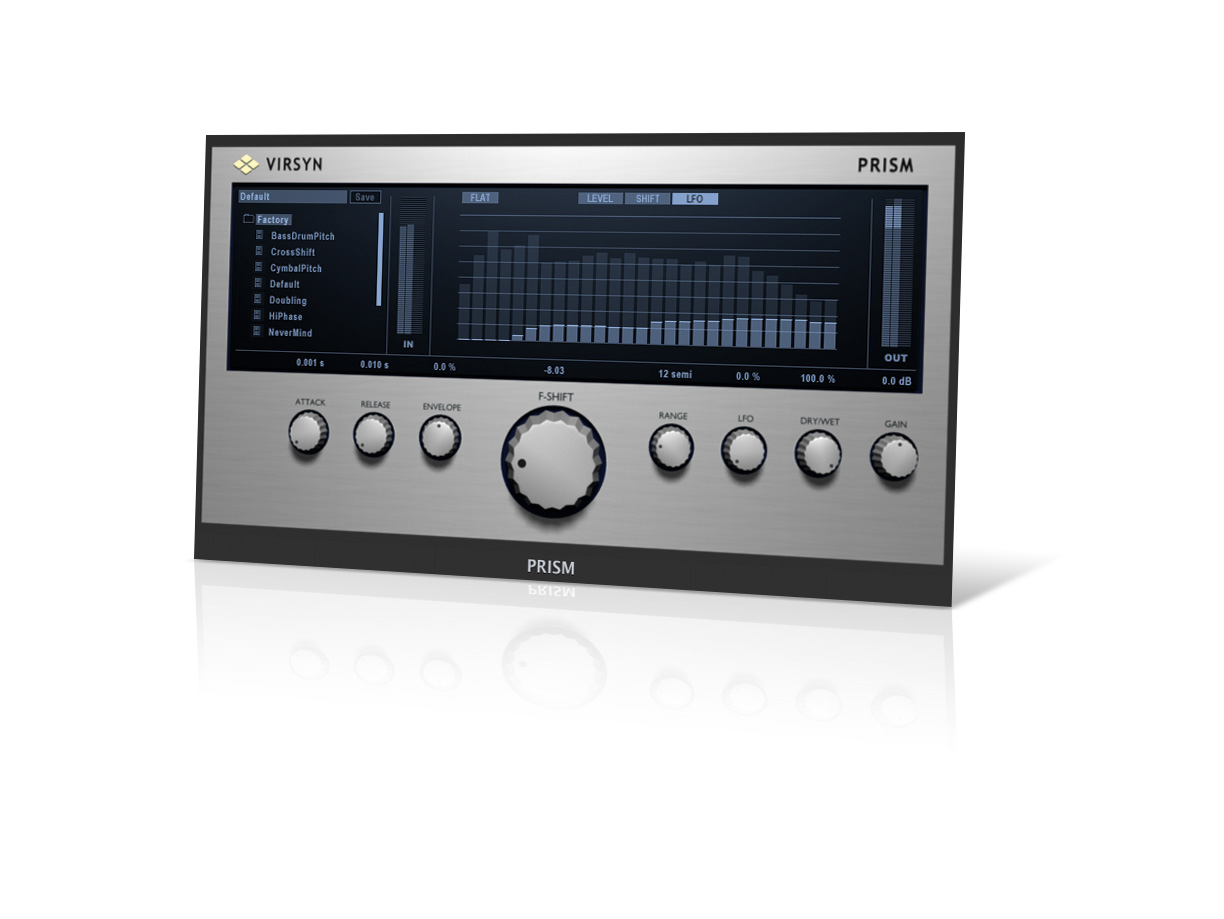MusicRadar Verdict
Prism offers a twist on pitchshifting and is surprisingly easy to use, though the fixed nature of its bands is a bit of a kicker.
Pros
- +
Simple, easy interface. Real-time, band-specific pitchshifting! Control of level and LFO speed per band. Shifts five octaves up and down.
Cons
- -
Few presets. No formant correction. Limited by fixed-frequency bands.
MusicRadar's got your back
Pitchshifting comes in both real-time and offline varieties, and is typically applied to the full frequency spectrum of an audio file. VirSyn's Prism takes a non-standard approach to this process, employing a multiband system that allows for greater control over the results.
Much like VirSyn's Bark multiband EQ/compressor, this relies on linear phase band-pass filters covering 27 bands, ranging from 50Hz to 17.5kHz, and enables band-wise real-time pitchshifting by 60 semitones up or down (note that, like Bark, you'll also need a Syncrosoft dongle to use the software).
If this hasn't boggled your mind already, VirSyn has also included a level control and individually adjustable LFOs for each band, and the thing's rounded off with a global envelope follower.
Impressive stuff, but you may be wondering what you would use such a plug-in for? VirSyn suggests that you could adjust individual elements of a loop with it, such as a kick drum, but given the massive pitch range, we're thinking it may attract anyone into sound design or general sonic mashing.
One thing Prism doesn't do is formant correction, indicating that vocals and speech aren't its primary targets.
In detail
Most of the action takes place in the multiband graphic display, where you have mouse control over the band parameters. There are three main screens - Level, Shift and LFO - and, in addition to the graphic EQ-style section, context-sensitive parameter values are indicated in the bottom right corner. Level settings are the most straightforward, allowing +/-12dB per band.
Adjusting pitch and LFOs requires use of both the graphic sliders and the global knobs below. For LFOs, each graphic band can have its own speed (0Hz to 100Hz), while the global LFO knob controls the overall amount for all bands (0 to 100%).
For pitch, the global knobs affect all bands, while the graphic sliders act as an offset against these (up to +/-100%). The global Range knob goes right up to 60 semitones, with the F-Shift control working up to this limit (plus or minus in single cent steps).
The envelope follower is a simple attack/release design with an amount parameter enabling the amplitude of the incoming signal to control the onset of the effect. Finally, there's a global mix blend and an output gain control.
In use
Prism feels like the slickest VirSyn plug-in yet. The graphic display means you can easily get sidetracked producing crazy and wacky effects, rendering your original sound unrecognisable.
But with a bit of care (and a more restricted shifting range), it's also possible to create rich chorused effects, which can be focused on specific frequency ranges.
With Prism's fixed frequency bands matching those found in Bark (50Hz, 150Hz, 250Hz, etc), the prospect of tuning individual elements of a loop seems dependent on the sounds coinciding with those bands.
In practice, we found this re-pitching functionality to be less successful than we'd hoped. What's more, with only ten presets to demonstrate its charms, there's also a sense that VirSyn hasn't quite nailed down Prism's true potential, either.
Still, it's evidently a powerful plug-in that offers a fresh perspective on an age-old process.
Listen to Prism do its stuff:
Computer Music magazine is the world’s best selling publication dedicated solely to making great music with your Mac or PC computer. Each issue it brings its lucky readers the best in cutting-edge tutorials, need-to-know, expert software reviews and even all the tools you actually need to make great music today, courtesy of our legendary CM Plugin Suite.
“Built from the same sacred stash of NOS silicon transistors and germanium diodes, giving it the soul – and snarl – of the original”: An octave-fuzz cult classic returns as Jam Pedals resurrects the Octaurus
What’s the buzz? Meet Yellowjacket, Cherry Audio's recreation of EDP’s trend-setting Wasp from 1978
“A fabulous trip through all eight songs by 24 wonderful artists and remixers... way beyond anything I could have hoped for”: Robert Smith announces new Cure remix album











